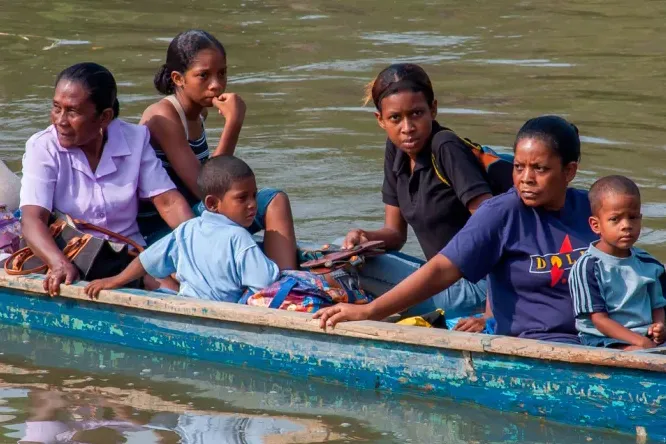Emphasizing the synodal dimension allows the Church to rediscover its itinerant nature, as the people of God journeying through history on pilgrimage, “migrating,” we could say, toward the kingdom of heaven (cf. Lumen Gentium, 49). The biblical narrative of Exodus, depicting the Israelites on their way to the promised land, naturally comes to mind: a long journey from slavery to freedom prefiguring the Church’s journey toward her final encounter with the Lord.
Likewise, it is possible to see in the migrants of our time, as in those of every age, a living image of God’s people on their way to the eternal homeland. Their journeys of hope remind us that “our citizenship is in heaven, and it is from there that we are expecting a Savior, the Lord Jesus Christ” (Phil 3:20).
The images of the biblical exodus and of migrants share several similarities. Like the people of Israel in the time of Moses, migrants often flee from oppression, abuse, insecurity, discrimination, and lack of opportunities for development. Similar to the Jews in the desert, migrants encounter many obstacles in their path: They are tried by thirst and hunger; they are exhausted by toil and disease; they are tempted by despair.
Yet the fundamental reality of the Exodus, of every exodus, is that God precedes and accompanies his people and all his children in every time and place. God’s presence in the midst of the people is a certainty of salvation history: “The Lord your God goes with you; he will not fail you or forsake you” (Dt 31:6). For the people who came out of Egypt, this presence manifested itself in different forms: a pillar of cloud and fire showing and illuminating the way (cf. Ex 13:21), the meeting tent that protected the ark of the covenant, making God’s closeness tangible (cf. Ex 33:7), the pole with the bronze serpent assuring divine protection (cf. Nm 21:8-9), manna and water (cf. Ex 16-17) as God’s gifts to the hungry and thirsty people. The tent is a form of presence especially dear to the Lord. During David’s reign, God chose to dwell in a tent, not a temple, so that he could walk with his people, “from tent to tent and from dwelling to dwelling” (1 Chr 17:5).
Many migrants experience God as their traveling companion, guide, and anchor of salvation. They entrust themselves to him before setting out and seek him in times of need. In him, they find consolation in moments of discouragement. Thanks to him, there are good Samaritans along the way. In prayer, they confide their hopes to him. How many Bibles, copies of the Gospels, prayer books and rosaries accompany migrants on their journeys across deserts, rivers, seas and the borders of every continent!
God not only walks with his people, but also within them, in the sense that he identifies himself with men and women on their journey through history, particularly with the least, the poor, and the marginalized. In this we see an extension of the mystery of the Incarnation.
For this reason, the encounter with the migrant, as with every brother and sister in need, “is also an encounter with Christ. He himself said so. It is he who knocks on our door, hungry, thirsty, an outsider, naked, sick, and imprisoned, asking to be met and assisted” (Homily, Mass with Participants in the “Free from Fear” Meeting, Sacrofano, Feb. 15, 2019). The final judgment in Matthew 25 leaves no doubt: “I was a stranger and you welcomed me” (v. 35); and again “truly, I say to you, as you did it to one of the least of these brothers and sisters of mine, you did it to me” (v. 40). Every encounter along the way represents an opportunity to meet the Lord; it is an occasion charged with salvation, because Jesus is present in the sister or brother in need of our help. In this sense, the poor save us, because they enable us to encounter the face of the Lord (cf. “Message for the Third World Day of the Poor,” Nov. 17, 2019).
Dear brothers and sisters, on this day dedicated to migrants and refugees, let us unite in prayer for all those who have had to leave their land in search of dignified living conditions. May we journey together with them, be “synodal” together, and entrust them, as well as the forthcoming synod assembly, “to the intercession of the Blessed Virgin Mary, a sign of sure hope and consolation to the faithful people of God as they continue their journey” (“XVI Ordinary General Assembly Synthesis Report: Proceeding Along the Journey”).
Prayer
God, Almighty Father,








